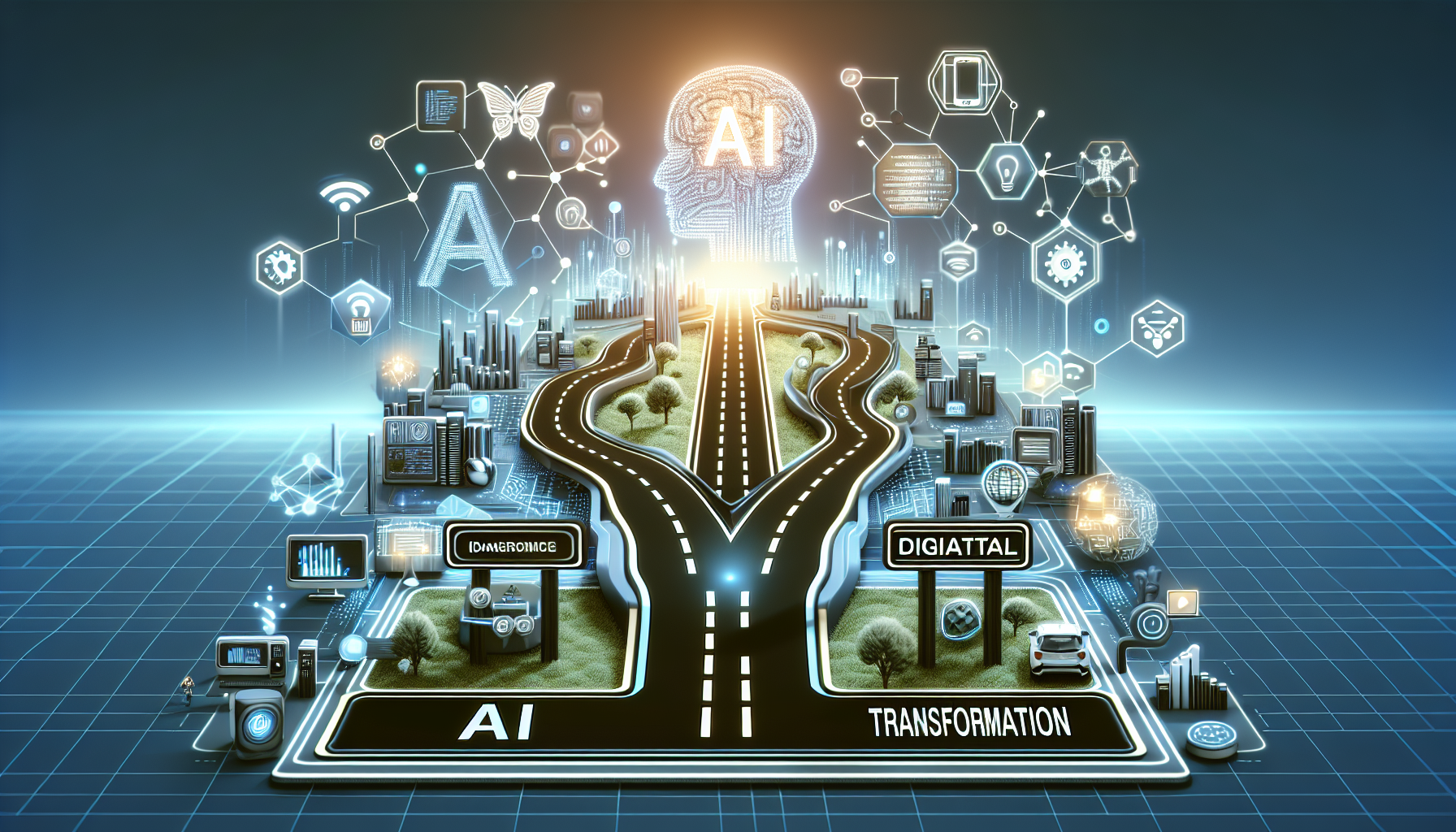Understanding AI Within Digital Transformation
Digital transformation integrates technology into all areas of a business, fundamentally changing how it operates and delivers value to customers. At its core, this involves adopting digital technologies to enhance processes, communication, and business models. Artificial Intelligence (AI) is a key driver of this evolution, providing innovative solutions that enhance decision-making, increase operational efficiency, and improve customer experiences.
The Role of AI in Digital Transformation
AI technologies—such as machine learning, natural language processing, and computer vision—enable businesses to analyze vast amounts of data quickly and accurately. They uncover insights that can lead to better decision-making. Companies leveraging AI effectively can predict market trends, personalize customer interactions, and streamline operations.
-
Data-Driven Decision-Making: AI tools help organizations to make data-driven decisions. Predictive analytics, powered by AI, forecasts trends, enabling proactive strategies rather than reactive ones. For instance, retailers use AI to analyze shopping patterns, optimize inventory, and personalize marketing efforts.
-
Enhanced Customer Experience: AI personalization algorithms analyze user data and tailor the customer experience accordingly. Companies like Amazon and Netflix thrive on this capability, delivering content and product suggestions based on previous behavior. Chatbots, powered by AI, provide 24/7 customer support, enhancing engagement and satisfaction.
-
Automation of Processes: Robotic Process Automation (RPA) is an AI subset that automates repetitive tasks, freeing human resources for more complex activities. Organizations can achieve higher efficiency by automating routine workflows, such as invoice processing or data entry.
-
Operational Efficiency: AI improves operational efficiency through real-time data analysis. For example, a manufacturing facility using AI can predict equipment failures before they occur, minimizing downtime and maintenance costs.
-
Innovation: AI fuels innovation by enabling the creation of new services and products. Companies can leverage AI insights to identify market gaps or emerging trends, fostering a culture of innovation.
Building a Roadmap for Integrating AI in Digital Transformation
-
Define Clear Objectives: Organizations must start by defining clear objectives for their digital transformation strategy. Understand what problems AI is expected to solve and how success will be measured. This can include improving customer service metrics, reducing operational costs, or enhancing employee productivity.
-
Assess Current Capabilities: Evaluate existing technological capabilities and identify gaps. Understanding the current AI maturity level within the organization will inform the next steps in integrating AI effectively.
-
Investment in Technology and Talent: Digital transformation requires investment in both technology and talent. Companies should prioritize acquiring cutting-edge AI tools and platforms while also investing in training employees to use these technologies. Partnering with AI vendors or consulting firms can also bridge the skills gap.
-
Data Governance and Management: Data is the cornerstone of AI, and having a robust data governance strategy is essential. Ensure data quality, security, and privacy compliance. Implement data collection strategies that enhance the quality and quantity of accessible data for AI algorithms.
-
Pilot Projects: Starting with pilot projects is crucial for testing AI applications in a controlled environment. These small-scale initiatives help identify the potential impact of AI, allowing organizations to refine processes before full-scale implementation.
-
Iterative Approach: Digital transformation with AI involves continuous iteration and improvement. Organizations should be prepared to adapt strategies based on findings, ensuring that the AI implementations align with evolving business goals and market conditions.
-
Integrating AI Across Departments: To realize the full potential of AI, integration across departments is vital. Sales, marketing, operations, and HR can all benefit from AI applications. Cross-functional teams can foster collaboration, ensuring that AI initiatives are aligned with overall business objectives.
-
Measuring Success: Establish KPIs for each AI initiative to measure success. Common performance metrics include increased revenue, cost reductions, improved customer satisfaction, and enhanced employee productivity. Regular assessment and feedback loops will guide future AI initiatives and adjustments.
Overcoming Challenges in AI-Driven Digital Transformation
-
Cultural Resistance: One of the significant challenges organizations face in digital transformation is cultural resistance to change. Implementing a change management strategy can mitigate this. Encourage a culture of innovation and learning, where employees feel empowered to adopt new technologies.
-
Ethical Considerations: As AI becomes more embedded in business operations, ethical concerns regarding data use and algorithmic bias must be addressed. Organizations should establish an ethics framework to guide responsible AI use.
-
Technical Integration: Integrating AI with legacy systems can be complex and require significant resources. Choosing scalable AI solutions that can seamlessly integrate with existing infrastructure is crucial.
-
Data Privacy and Security: With data privacy regulations such as GDPR and CCPA, organizations must prioritize compliance while using AI. Implementing robust cybersecurity measures and transparent data policies is essential to building customer trust.
Future Trends in AI and Digital Transformation
-
AI-Driven Predictive Analytics: The future will see an increased reliance on AI-driven predictive analytics. This will not only enhance decision-making across sectors but also improve supply chain management and risk assessment.
-
Hyper-Automation: Beyond RPA, hyper-automation involves the combination of AI tools to automate complex business processes. Integrating AI into hyper-automation initiatives will lead to more agile operations.
-
Augmented Intelligence: Future AI applications will focus on augmenting human capabilities rather than replacing them. Organizations will leverage AI for decision support, enhancing human creativity and problem-solving.
-
AI in Cybersecurity: As threats evolve, AI will play a critical role in enhancing cybersecurity strategies, enabling proactive threat detection and response.
-
AI Democratization: Tools for developing AI applications will become more accessible, enabling businesses of all sizes to leverage AI technologies, fostering innovation across industries.
Each of these trends represents an opportunity for organizations embarking on their digital transformation journey to capitalize on emerging technologies while enhancing their competitive advantage in an increasingly digital marketplace.


